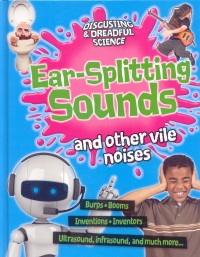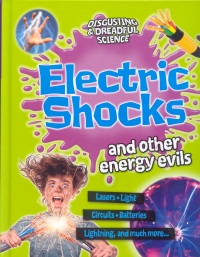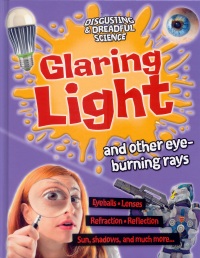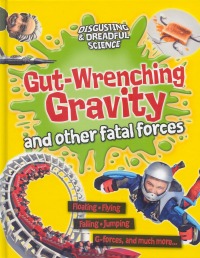| ________________
CM . . .
. Volume XIX Number 32. . . .April 19, 2013
excerpt:
Disgusting, dreadful and fun. The “Disgusting & Dreadful Science” series is a winner. Fun facts are presented in a way that will appeal to your genuine science lovers as well as your grossology addicts, or even a casual no-fiction reader. Who can resist a series with chapters like “Grunts, growls, squeaks, and shrieks”, or “Frankenstein’s monster”, or “All about the vomit comet!”? Author Anna Claybourne and the editing and production team have produced four books that are visually appealing, informative, and engaging. Young readers will learn theory, history, applications and people involved in the development of our understanding of sound, light, electricity and gravity. Each book also includes a table of contents, glossary, an index and a list of “Websites and Places to visit”. The Canada Science and Technology Museum and the Ontario Science Centre are included in the list, as well as a representative list of websites and science locations from around the world. Between the table of contents and the index are 26 pages of well-laid out text, photos, diagrams, illustrations and eye-catching information boxes with headings such as “Yuck!”, “Ouch!”, and “See for Yourself”. “See for Yourself” boxes contain simple experiments demonstrating some very complex concepts. “Ouch!” boxes are cautions or warnings and “Yuck!” boxes are what you would expect – yucky facts. Ear-Splitting Sounds and Other Vile Noises covers topics ranging from whoopee cushions to echolocation and pre-birth ultrasound pictures. Loud sounds, musical sounds, sound inventions, sound weapons and sounds of the future are all presented in text and pictures. A “Yuck!” box tells us the pretty yucky fact that:
Electric Shocks and Other Energy Evils begins with a simple explanation of what electricity is made of, illustrated with a diagram of an atom, and an explanation of an electric current, also with a simple illustration. Readers (young and older) will be informed and reassured that they can understand this topic. The book then goes on to include information about power generation, batteries and circuits, lightning, static electricity, scientists and inventors who discovered ways to harness and use electricity, how electricity carries information throughout our nervous system, and electricity in medicine. An “Ouch!” box tells readers:
Glaring Light and Other Eye-burning Rays informs readers about refraction, reflection, time travel, photosynthesis, 3D, electricity, the spectrum, bioluminescence, and exciting new light technologies. There is also a section on “Deadly light”, dealing with the dangers of sunburn, looking directly at the sun, snow blindness and skin cancer. Gut-Wrenching Gravity and Other Fatal Forces includes information about g-forces, black holes, magnetism, friction, and the deadly power of gravity when it causes floodwater, avalanches, landslides, and volcanic lava rivers. “Gravity geeks” explains some of the basic principles of physics discovered by Galileo, Newton, and Einstein. A “See for Yourself” box gives an experiment that students can perform to help understand Einstein’s theory that “gravity happens because matter bends space and time, so that smaller objects fall ‘in’ toward it.”
With the accompanying diagram to help me visualize this experiment, even I get it – I think. Get ready to have fun sharing some of the grossest facts from any or all of these books. And you may have to get used to a few gasps and giggles as students share some of the best/worst bits with each other. Let the learning begin. Buy them in hardback or paperback. Worth the price whatever your budget. Highly Recommended. Suzanne Pierson, a retired teacher-librarian, is currently instructing librarianship courses at Queen’s University in Kingston, ON.
To comment
on this title or this review, send mail to cm@umanitoba.ca.
Copyright © the Manitoba Library Association. Reproduction for personal
use is permitted only if this copyright notice is maintained. Any
other reproduction is prohibited without permission.
NEXT REVIEW |
TABLE OF CONTENTS FOR THIS ISSUE
- April 19, 2013.
AUTHORS |
TITLES |
MEDIA REVIEWS |
PROFILES |
BACK ISSUES |
SEARCH |
CMARCHIVE |
HOME |



